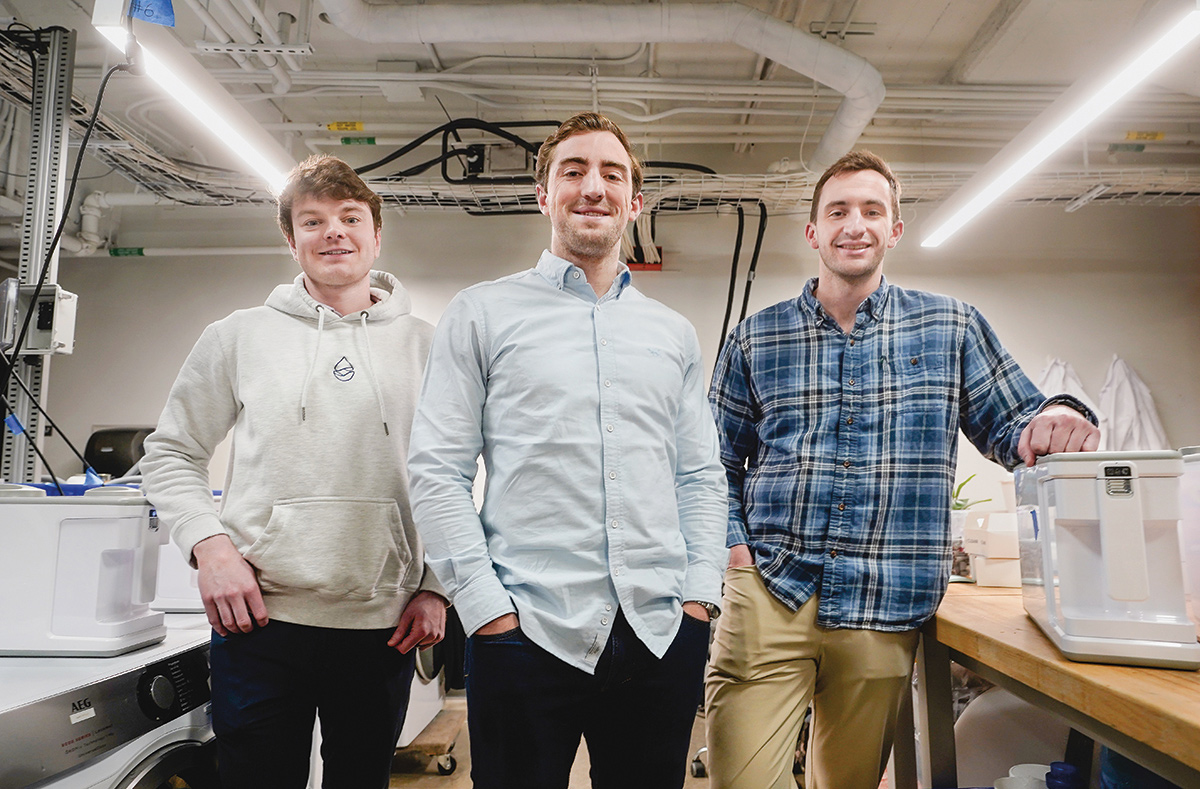lens
Three CWRU Students Saw a Problem …
And now their company is capturing microplastic emissions from a key source
 Photo by Gus ChanThe CLEANR founders in their Sears think[box] workspace, from left: Chip Miller, David Dillman and Max Pennington. They began tinkering with ideas after Pennington learned washing-machine wastewater is the No. 1 source of microplastics pollution flowing into the environment.
Photo by Gus ChanThe CLEANR founders in their Sears think[box] workspace, from left: Chip Miller, David Dillman and Max Pennington. They began tinkering with ideas after Pennington learned washing-machine wastewater is the No. 1 source of microplastics pollution flowing into the environment.In 2021, three Case Western Reserve University engineering students headed to the university's Larry Sears and Sally Zlotnick Sears think[box] makerspace to tackle a troubling problem: Millions of pounds of microplastics pollute the environment annually, pulled from clothing during washing-machine cycles and sent into water systems.
With the help of campus entrepreneurial resources, their tinkering turned into a startup called CLEANR, which has developed external and internal washing-machine filters to extract microplastics from the wastewater.
"That's the largest source of microplastic pollution," said CEO Max Pennington (CWR '22), one of CLEANR's founders. Chip Miller, the company's chief operating officer, and David Dillman, the chief technology officer, are the other co-founders who began developing the company as CWRU students.
Working with the university, CLEANR recently installed five of its filters in a campus residence hall. In April, it rolled out an initiative to bring the filters to other universities.
And the company remains at Sears think[box], in the seventh-floor business incubator.
Most of its seven full-time employees and three CWRU student interns work there, amid washing machines topped with CLEANR filters.
"Working in think[box] lets us keep going as fast as we can," Pennington said.
With 3D printers, computer-aided design equipment and machine tools all just a stairwell away, CLEANR staff can brainstorm an idea and turn it into a printed prototype within hours.
The Sears think[box] staff has also met their evolving needs—even installing new electrical outlets so filters can be tested on European washing machines.
CLEANR's filter extraction system, called VORTX, was inspired by the way the gills of manta rays and whale sharks create a vortex to prevent clogging as they draw in food.
"We learned from nature to protect nature," Pennington said.
In February, a nonprofit scientific research organization in Maine certified that the filters remove 90% of microplastics down to 50 microns in size. That's the diameter of a human hair.
"We're proud of what we're doing and where we're doing it," Pennington said. Microplastic pollution "is gaining a lot of attention right now with more people starting to realize the impact on our environment and our health."





